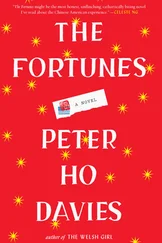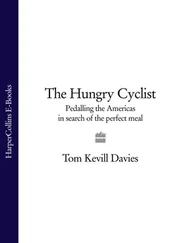That view, as I hope to show, is misconceived. The Treasury has successfully fought off attempts to diminish its status over the past two decades, continues to attract high-quality staff (if perhaps too few of them) and is as powerful as ever. Successive Prime Ministers have found that fighting the Treasury in the end makes them weaker, and they come to rely on its support. Boris Johnson has followed exactly that trajectory. In macroeconomic policy, the Treasury must now share centre stage with the Bank of England, but that has in some ways strengthened its hand: ‘We would love to help with your spending plans, but the bank manager will not allow it.’
This is, nonetheless, a story of downs and ups for the Treasury as an institution. It took a knock in 1997 when the Bank was set free, but rolled with that punch. It was floored briefly by the financial crisis, but not counted out, performed well at the most difficult time, and reasserted its authority in the recovery phase. It triumphed in the 2014 Scottish wars, but suffered another heavy blow in the 2016 EU referendum, and was then side-lined in the Brexit negotiations. For a time, that looked fatal, and its enemies marshalled their resources for a final assault, but Covid, paradoxically, came to the rescue. It was no time to begin reshuffling the economic deckchairs, and Treasury ministers and officials showed resilience and imagination in devising rescue schemes to keep the productive economy afloat in the storm. So reports of its death proved greatly exaggerated.
In what follows, my aim has been to allow ministers and officials to tell the story themselves, as far as possible, though I am sure they, and readers, will consider that I have at times led the witnesses. Others will consider that, as an intermittent insider, I have delivered a conventional reading, too favourable to the ‘Treasury view’. As the saying goes: ‘You can take the man out of the Treasury, but you can’t take the Treasury out of the man.’
Chapter 1sets the scene, with a brief review of the UK’s economic performance during the period.
Chapter 2discusses macroeconomic policy, which was defined rather differently in a period when interest rates were set by the central bank.
In Chapter 3, I review the approach taken by successive governments to the control of public expenditure and in Chapter 4, I assess the performance of the Treasury in setting tax policy.
Chapter 5changes gear and considers the Treasury’s unusually public role in the 2014 referendum campaign on Scottish independence, where its intervention was arguably decisive in determining the outcome. Chapter 6examines the department’s far less successful interventions in the EU referendum campaign – dubbed Project Fear – and explores the Treasury’s changing attitude to the European Union, and specifically to Economic and Monetary Union (EMU), through the period. I review the economic implications of Brexit and the Treasury’s role in the negotiations leading to the Trade and Cooperation Agreement.
Chapter 7explores the Treasury’s responsibilities for financial regulation and the City of London generally. Those responsibilities were broadened in 1997 after the creation of the Financial Services Authority (FSA). The way the department responded to the 2008/9 Global Financial Crisis (GFC) is evaluated, as is the subsequent second reform of the regulatory bodies carried out under Osborne. The specific issues raised by Brexit for the UK financial sector and its access to EU markets are considered.
Chapter 8reviews the Treasury’s attitude to climate change and its economic implications, from initial scepticism, through the Stern Review to the embrace of a net zero target in 2021.
In Chapter 9, I describe the way the responsibilities of the Treasury have evolved through the period and Chapter 10includes an account of the key individuals, both ministers and officials, who have led and shaped the department over the last quarter of a century.
Chapter 11concludes with some reflections on the period as a whole, and the challenges the Treasury now faces. My thesis is that the troubles ahead will be more menacing to the institution, and more challenging to its traditional philosophy and ways of working than were the crises of the recent past. The whole basis of the ‘Treasury view’ needs to be rethought and, if it is to navigate the twin challenges of Covid recovery and climate change, it will need different skills and more people.
1 1. The Chancellors’ Tales, ed. Howard Davies. Polity, 2006.
2 2. Lionel Barber, The Treasury today: A devalued currency? Prospect, January/February 2021. https://www.prospectmagazine.co.uk/magazine/the-treasury-today-a-devalued-currency-lionel-barber-rishi-sunak.
Gus O’Donnell, Permanent Secretary to the Treasury from 2002 to 2005, has declared that ‘the era of GDP being the unique measure is now over’. He quotes Robert F. Kennedy, who said: ‘GDP measures neither our wit nor our courage, neither our wisdom nor our learning, neither our compassion nor our devotion to our country, it measures everything, in short, except that which makes life worthwhile.’ 1And he points out more prosaically that gross domestic product (GDP) as conventionally defined is not well suited for modern service-based economies with larger government sectors. That describes the UK quite well, indeed increasingly so. But even O’Donnell acknowledges that GDP measures ‘have a long history and are very useful for making comparisons over time and between countries’.
Using that imperfect methodology, how well did the British economy perform under the five Chancellors whose periods of stewardship we are considering, both in absolute and relative terms? And what can we confidently say about the influence of the government’s economic policy on that performance?
The period, like Gaul, divides into three parts. The Labour government was in office from 1997 to 2010, which is a long enough interval to use for comparisons forward and back. The figures are distorted somewhat by including the years of the financial crisis and its immediate aftermath, but if we allow Labour the pre-crisis boom, it is not unreasonable that they should also accept the bust. Brown famously declared that he had put an end to boom and bust, so it would be hard for him to complain. The second period runs from 2010 to 2016. That encompasses the full term of the Coalition government, and the first year of a majority Conservative administration. Osborne was Chancellor throughout. The third period begins with the EU referendum, which marked the beginning of a significant change of trend. The end of that third period is dominated, and distorted, by the Covid crisis, but the four-year stretch from the launch of the referendum campaign to the first Covid lockdown is long enough to have its own distinct characteristics.
1997–2010: The Brown years
The early 1990s had been a turbulent period in economic policy terms, with the chaotic withdrawal from the European Exchange Rate Mechanism (ERM) in 1992. However, underlying economic performance during the long Conservative hegemony, from 1979 to 1997, was relatively good. GDP per capita had fallen relative to the US, Germany and France from 1870 to 1979, if we ignore the war periods, but the trend began to reverse at the end of the 1970s. UK GDP per head was about 23% above the US in 1870. By 1979 the US was 43% ahead of the UK. In 2007 the UK was still behind, but the gap had narrowed to 33%: still a significant discount, but reflecting a steady improvement in productivity throughout the period.
The extent to which this change in trend can be attributed to the policies of the Thatcher and Major governments remains in dispute, and is outside the scope of this book, though most economists would acknowledge that the labour market reforms, privatization (at least in its early stages), a tougher approach to failing firms, and lower marginal tax rates all contributed. The period was also the first in which we began to see the implications of membership of the European Community, as it then was. Nicholas Crafts shows that larger trade volumes have had a positive impact on productivity. He argues: ‘In the case of the United Kingdom the gain from joining the EU was probably around 10 per cent of GDP … [arising from] a significant increase in competition as protectionism was abandoned.’ 2
Читать дальше









